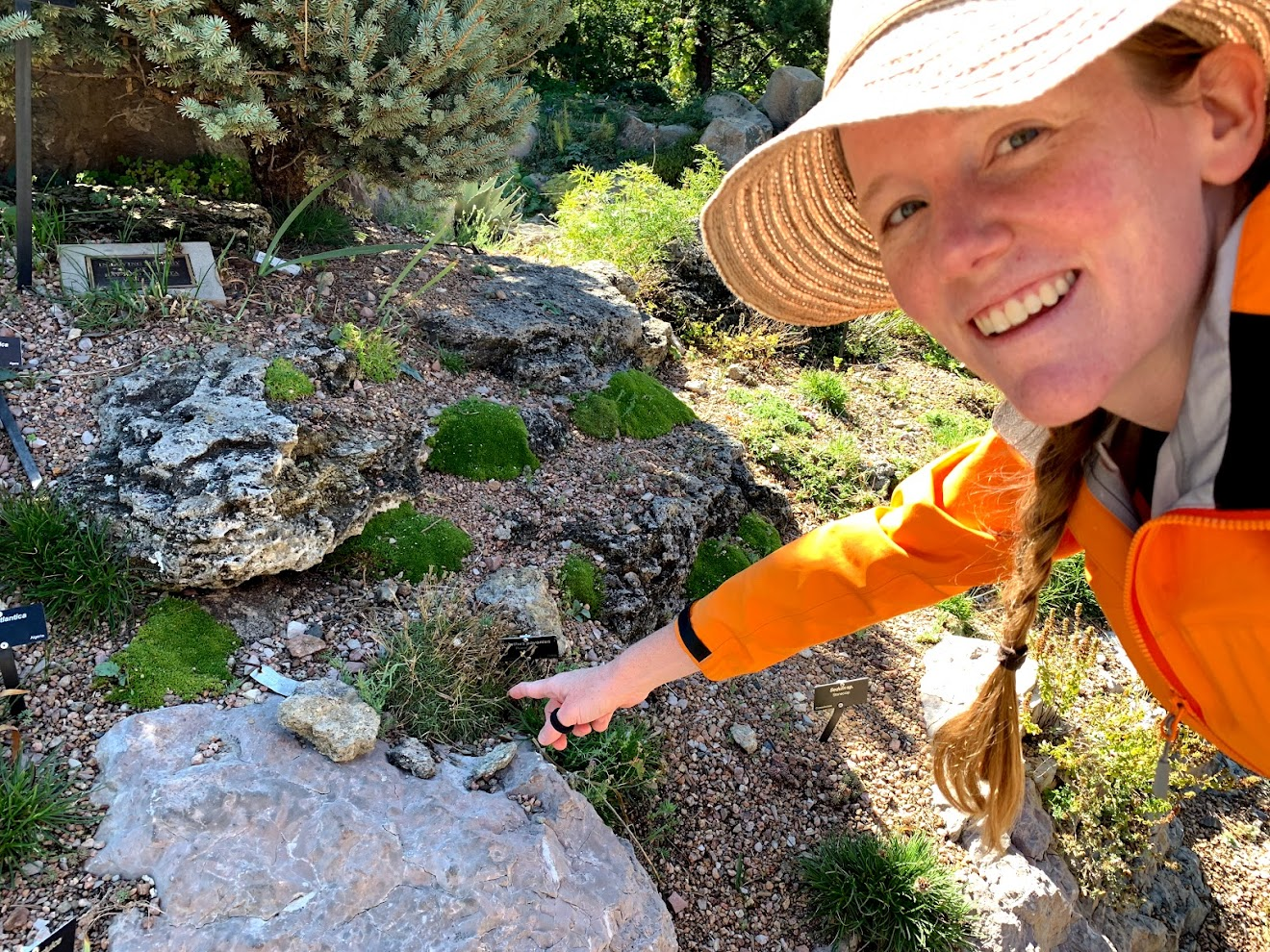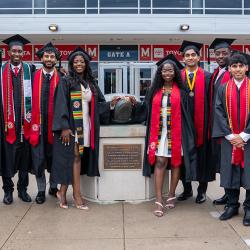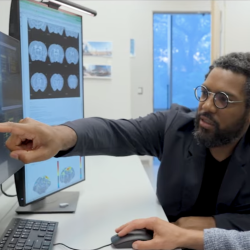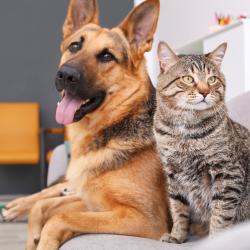Emme Bruns Unravels Interactions Between Diseases and Hosts
For Emily “Emme” Bruns, who grew up rooting around in the dirt and exploring in the forests of Northern California, a career in ecology was a natural fit and a bit of a family legacy.

“My dad is an ecologist at UC Berkeley,” explained Bruns, an assistant professor of biology at the University of Maryland. “I grew up thinking digging in the dirt was a normal thing to do because my dad is a mycologist who teaches classes on mushrooms and studies the interactions between fungi and trees. I was always sort of attuned to the fact that there was a lot more going on in the forest—that there were these microbes doing interesting things.”
In her research, Bruns tries to piece together what some of those microbes do and how their relationship to the plants they infect influences everything from population size and distribution to evolution.
“The heart of what I'm interested in is that interaction between evolution and ecology,” Bruns said. “How does disease affect host populations in nature, and then, how does that feed back to the evolution of the disease to change the ecology? For instance, you might have an epidemic sweep through a natural population, either killing or sterilizing everything in its path. That exposes any genetic variation in the host that might provide some natural resistance to the disease. And you can get very rapid evolution of the host that in turn can drive evolution in the pathogen population to keep up. So, we're always looking at both sides of the interaction.”
As a model for answering these broader questions about disease-host interactions, Bruns studies anther smut disease in wild carnations. Anther smut is a fungus that sterilizes but doesn’t kill the host plant. By teasing out relationship dynamics between the fungus and its host, Bruns’ findings may be applicable to disease-host relationships in other organisms such as agriculturally important crops and even humans.
For example, age often plays a role in disease susceptibility in humans and plants. Just as children are more vulnerable to diseases like measles and chicken pox, seedlings are more prone to infections than adult plants.
“No one has any idea why age dependence works this way because it doesn’t seem to make sense in an evolutionary context,” Bruns explained. “Usually, we think of natural selection as favoring the most beneficial traits, so juveniles who are not as susceptible to diseases would be more likely to survive to reproductive age. You would expect evolutionary pressure to lead to more disease resistance in juveniles, but that’s not the case.”
Age susceptibility is a key area of study for Bruns, along with questions about the role of fitness and susceptibility in disease ecology. For example, theory would predict that anther-smut would drive the host carnations to extinction in some cases because it prevents plants from reproducing. But that hasn’t happened, and while resistance has evolved to a high level in adult plants, juveniles have not evolved higher resistance, and Bruns wants to understand why.
“I find it fascinating that the high susceptibility of seedlings to anther smut actually allows the disease to persist,” Bruns said. “If the seedlings evolved a higher level of resistance the disease would go extinct. This is fascinating because it suggests that there are real ecological consequences to these evolutionary questions we study.”
Those questions and their consequences have broad implications for the survival and fitness of many species where similar dynamics occur.
“I work on plants because it's very easy to break apart the factors that influence the relationship between host and disease,” Bruns said. “We can infect the plants and we can see what is related to susceptibility versus exposure to the pathogens and how those two things play out together.”
Since arriving at UMD in January 2020, Bruns established experiments at the UMD greenhouse and at a field site at the Maryland Agricultural Experiment Station in nearby Beltsville. She also runs ongoing studies in the Alpine mountains of northwestern Italy, research that she began during her postdoctoral fellowship with Janis Antonovics at the University of Virginia.
Bruns’ various research sites provide ample opportunity for undergraduate and graduate students to conduct experiments on host-pathogen relationships. As COVID restrictions on travel continue to loosen, she hopes to travel back to her work site in Italy more regularly, perhaps even with a group of students.
In the meantime, she will focus on her Beltsville field site, where even her four-year-old daughter has gotten in on the field work. There, her daughter carries on the family legacy of rooting around in the dirt and learning that there is much more going on than meets the eye where microbes are busy “doing interesting things.”
Written by Kimbra Cutlip







